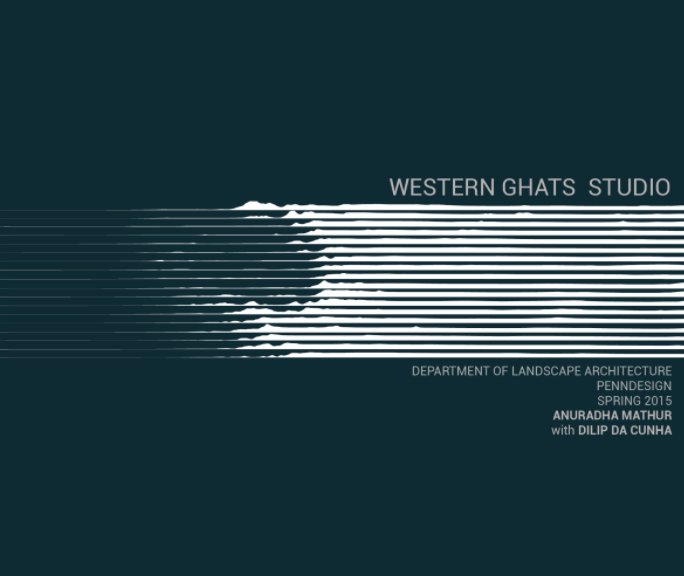SPLICE: THE ICONIC JOINT
LARP701 Western Ghats Studio Book
by Anuradha Mathur
This is the price your customers see. Edit price list
About the Book
To most people the Western Ghats is a range of hills on the west coast of India covered with monsoon forests, a repository of minerals, a UNESCO world heritage site and a biodiversity hotspot.
In this studio, however, the Western Ghats is a splice: a joint of two things that does not call attention to itself so much as to the new ‘singularity’ that it creates.
To say the Western Ghats is a splice is to see
a coast that calls attention to a land-sea gradient.
an escarpment that unites the ground beneath the Arabian Sea and the Deccan Plateau along a N-S shear that reveals layers of basalt toward the north and a surface of laterite to the south.
a threshold that allows the SW monsoon to come through, a moisture-laden wind that drops large amounts of rain between June and September on its way to the Himalayas
a ‘wild’ belt that generates networks of roadways, railways and airways to draw people from the urban centers on the Arabian Sea and the Deccan Plateau – people looking for ‘nature’, vacations, recreation, adventure and research.
a ground that reveals veins, strata and ore of coveted minerals.
a catchment of rain that inspires conduits of water and hydropower to cities on the Arabian Sea and the Deccan Plateau.
a biodiversity hotspot that calls attention to an endangered planet.
The singularity initiated by the Western Ghats in each of these cases has a beginning but no end, direction but no destination, trajectory but no enclosure. With this in mind, the studio initiated the design of splices that transformed the contested terrain of the Western Ghats on the ground and in the imagination.
In this studio, however, the Western Ghats is a splice: a joint of two things that does not call attention to itself so much as to the new ‘singularity’ that it creates.
To say the Western Ghats is a splice is to see
a coast that calls attention to a land-sea gradient.
an escarpment that unites the ground beneath the Arabian Sea and the Deccan Plateau along a N-S shear that reveals layers of basalt toward the north and a surface of laterite to the south.
a threshold that allows the SW monsoon to come through, a moisture-laden wind that drops large amounts of rain between June and September on its way to the Himalayas
a ‘wild’ belt that generates networks of roadways, railways and airways to draw people from the urban centers on the Arabian Sea and the Deccan Plateau – people looking for ‘nature’, vacations, recreation, adventure and research.
a ground that reveals veins, strata and ore of coveted minerals.
a catchment of rain that inspires conduits of water and hydropower to cities on the Arabian Sea and the Deccan Plateau.
a biodiversity hotspot that calls attention to an endangered planet.
The singularity initiated by the Western Ghats in each of these cases has a beginning but no end, direction but no destination, trajectory but no enclosure. With this in mind, the studio initiated the design of splices that transformed the contested terrain of the Western Ghats on the ground and in the imagination.
Author website
Features & Details
- Primary Category: Architecture
-
Project Option: Standard Landscape, 10×8 in, 25×20 cm
# of Pages: 166 -
Isbn
- Softcover: 9781367493988
- Publish Date: Jul 06, 2016
- Language English
- Keywords Landscape Architect, Anuradha Mathur, Dilip Da Cunha, Splice, Yadan Luo, Emily Silber, Penndesign, Joanna Karaman, Joey Rosenberg, Leeju Kang, Qing Zhang, Yi Li, Yi Qi, Ying Liu, Zhuangyuan Fan
See More

